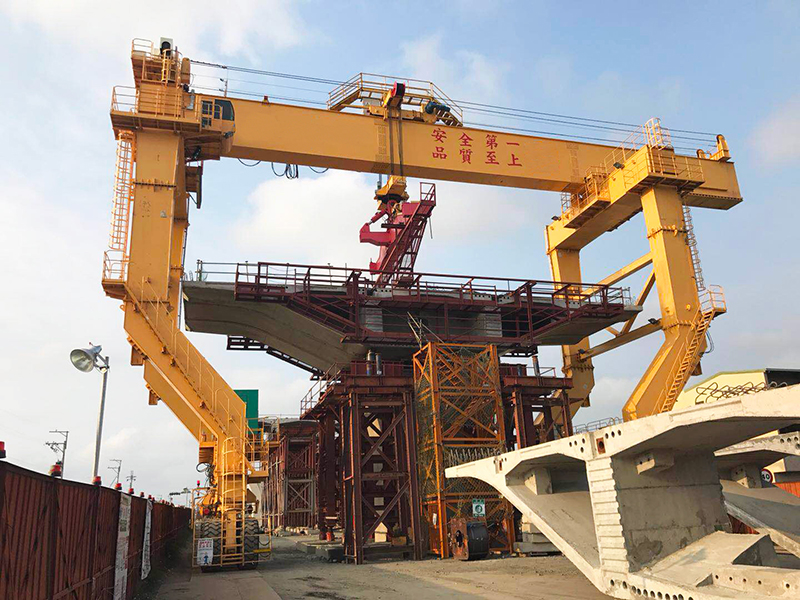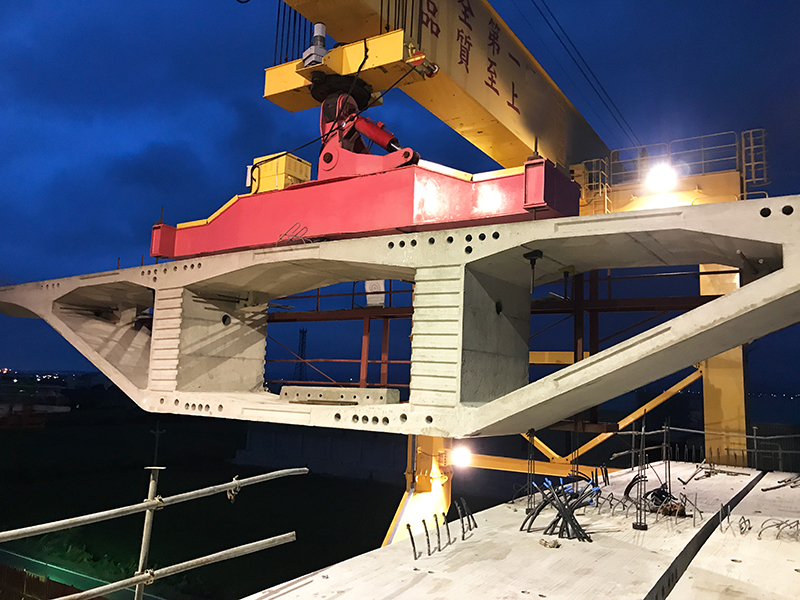Cranes have played a pivotal role in the construction industry for centuries, serving as essential tools for lifting and placing heavy materials with precision. Among the various applications of cranes, their ability to facilitate both the erection and dismantling of bridge components stands out as a testament to their versatility. In this article, we will explore the key features and considerations that make cranes indispensable in the construction and deconstruction of bridges.

The Erection Phase:
The erection of bridge components is a complex and critical stage in the construction process. Cranes are invaluable during this phase, primarily due to their lifting capacity, reach, and maneuverability. The heavy structural elements of a bridge, such as beams, girders, and segments, often require precise placement to ensure the stability and integrity of the structure.
Cranes come in various types, each designed for specific tasks. Tower cranes, mobile cranes, straddle carriers and crawler cranes are commonly used for bridge construction. Tower cranes, with their impressive height and lifting capacity, are ideal for lifting materials to great heights during the construction of tall structures like bridge towers. Mobile cranes, on the other hand, offer flexibility and can be easily transported to different locations on a construction site. Crawler cranes are equipped with tracks instead of wheels, providing stability on uneven terrain.
During the erection phase, cranes are employed to lift heavy components into position. Advanced crane technologies, such as telescopic booms and luffing jibs, enhance their reach and lifting capabilities, allowing construction crews to efficiently assemble bridge segments. Safety measures, including load monitoring systems and skilled crane operators, are essential to ensure the smooth and secure placement of components.

The Dismantling Phase:
As bridges age or undergo renovations, the need for dismantling and replacing components arises. Cranes once again prove their worth during the dismantling phase. However, the challenges faced during dismantling differ from those encountered during construction. Precision is crucial, as the removal of bridge components must be executed carefully to avoid damage to surrounding structures and ensure the safety of the crew.
Cranes used in the dismantling phase may require specialized attachments, such as grapples or magnet attachments, to efficiently handle and remove materials. Mobile cranes are often preferred for their versatility in navigating tight spaces and accessing different areas of the bridge. The controlled deconstruction of a bridge involves strategic planning, and cranes are integral to executing these plans with precision.
Considerations for Crane Usage:
While cranes are undoubtedly valuable in both the erection and dismantling phases of bridge construction, several considerations must be taken into account to ensure optimal performance and safety:
Load Capacity: Understanding the weight and dimensions of bridge components is crucial for selecting the appropriate crane with the required load capacity.
Reach and Mobility: The terrain and layout of the construction site influence the choice of crane in bridge construction. Mobile and crawler cranes are preferred for their ability to maneuver on uneven surfaces.
Safety Measures: Rigorous safety protocols, including regular inspections, operator training, and the use of safety devices, are imperative to prevent accidents during crane operations.
Environmental Impact: Construction projects often occur in sensitive environments. Cranes with low emissions and minimal environmental impact are increasingly favored to align with sustainable construction practices.
Conclusion:
The versatility of cranes in both the erection and dismantling phases of bridge construction underscores their significance in the infrastructure development landscape. From lifting heavy components to executing controlled deconstruction, cranes play a crucial role in ensuring the efficiency, safety, and precision of bridge construction projects. As technology continues to advance, the capabilities of cranes are likely to evolve, further enhancing their role in the construction industry. The synergy between human expertise and technological innovation remains key to harnessing the full potential of cranes in shaping the infrastructure of the future. For more info, visit https://steelmillcranes.com/